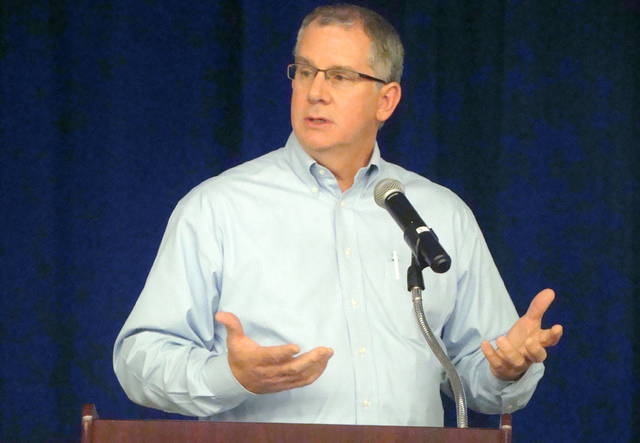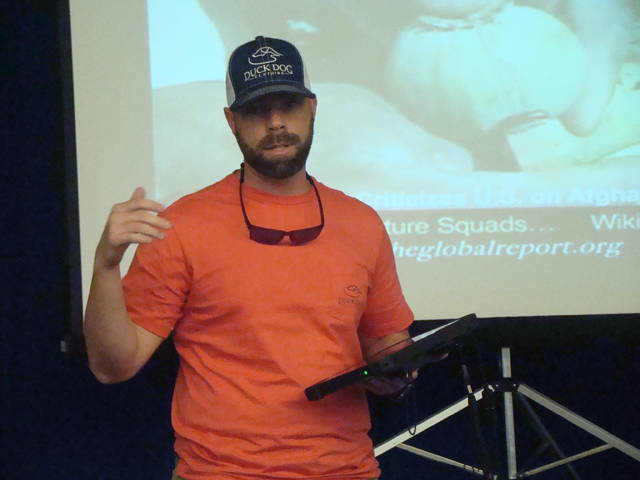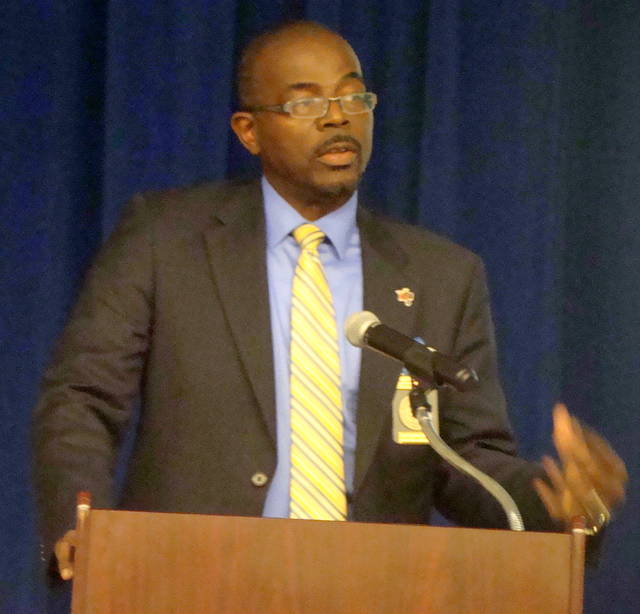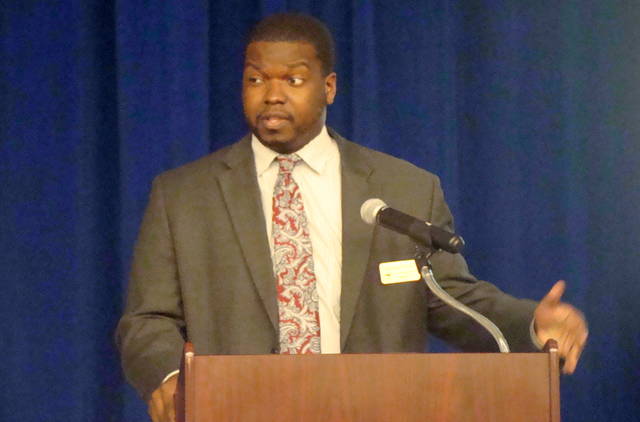DUBLIN — More than 50 individuals from across the leadership spectrum of Bladen County converged on Bladen Community College on Tuesday as part of an opioid forum, and the prevalent feeling among many was that they had no idea just how severe the epidemic had become.
But the numbers are staggering.
Bladen County had zero deaths attributed to opioid overdoses in 2005, but there were 15 cases in 2015; across the nation, there were more than 14,000 heroin overdoses in 2015; one in five teens abuse pain medications and one in 10 teens abuse cough medications; the Unites States is less than 5 percent of the world’s population but prescribe 99 percent of hydrocodone use; there have been 350,000 opioid deaths since 1999; Southeastern Carolina Crossroads has treated 374 men with addictions and 68 percent are heroin abusers.
The statistics, and there are many more, are eye-opening.
“This is a very serious epidemic facing society regardless of age, race, economic status, etc.,” said Charles Ray Peterson, chairman of the county’s Board of Commissioners. “We, as a county, plan to take this very seriously to enhance education, prevention and treatments.”
David Howard, director of the Bladen County Health and Human Services, told invited forum participants and others in attendance that all counties in North Carolina had been urged by the N.C. Association of County Commissioners to organize a task force aimed at finding solutions at the grassroots level.
“With us being sandwiched between Interstate 95 and Interstate 40, we’re in a hot spot for dealers to set us,” he shared.
Then, one by one, several presenters told what the face of addiction looks like now and how serious the opioid epidemic really was.
“We now have the high-school athlete who had an injury and became addicted; we have the stay-at-home mom who has battled depression and become addicted;and we have the company executive who became addicted through the use of prescribed medication,” said Karen Salacki of Eastpointe.
Richard Allen with the Bladen County Sheriff’s Office said prescription pills were what law enforcement dealt with most in the county He also shared that a YouTube video called “Doctors — Effects of Heroin” was a good source of information.
“Even the elderly are selling pills because Social Security may not be paying them enough to keep the lights on,” Allen said. “We had an elderly lady in 2011 we bought 270 pills from — she was making $6,000 to $7,000 a month selling pills.
“She dies two weeks after we bought the pills, so we never got to charge her,” he added.
Rebecca Hester, a pharmacist with The Medicine Shoppe in Bladenboro, said people need to remember that addiction is a disease.
“And it can start with something as innocent as sharing a pain pill with someone — a neighbor, family member, friend, anyone,” she said. “You just never know when that one pill might start someone on the path to addiction.”
Hester added that, nowadays, many doctors are expected to treat or mask the pain rather than fix or heal the problem.
“We’ve also seen that doctors who graduate from the lower-quality medical schools are writing three times the number of pain med prescriptions than those who graduate from the higher-quality med schools,” she added.
Don Flattery, a member of the Brunswick County Opioid Task Force, told the group that his interest in curbing the epidemic was personal, since he lost his 26-year-old son to opioid abuse in 2014.
“This epidemic is getting traction within the medical, criminal and political arenas, but the public’s understanding is woefully far behind,” he said. “This epidemic touches every single county in the country; like the AIDS epidemic in the 1980s, the public needs to know the effects of this addiction.”
David Chestnutt, director of Southeastern Carolina Crossroads in Elizabethtown, shared with the group that drug abuse had changed over the years.
“We’ve moved away from the weed, crack and meth,” he said. “Now we’re seeing opioids like heroin — and there is heroin in Bladen County. A lot of it.
“We really need to pray and ask God for direction,” he added. “We also need something for the women (because) we get a lot of calls from women asking for help.”
Several more presenters — from Bladen County DSS, EMS, health care, schools, BCC, the judicial system and economic development — all told about how the opioid epidemic was affecting their areas.
Quinton McGee, chief prosecutor for the District Attorney’s Office, said the concentration should be a three-pronged effort toward education, treatment and enforcement.
After nearly three hours, the forum participants then broke up into focus groups with a focus on resources, education and communication, tracking and prevention of opioid abuse. After a short discussion, the afternoon’s forum broke up and Howard said a task force would be established and another get-together would be scheduled soon in an effort to find ways to put the areas discussed into action.
W. Curt Vincent can be reached at 910-862-4163 or cvincent@s24515.p831.sites.pressdns.com.






